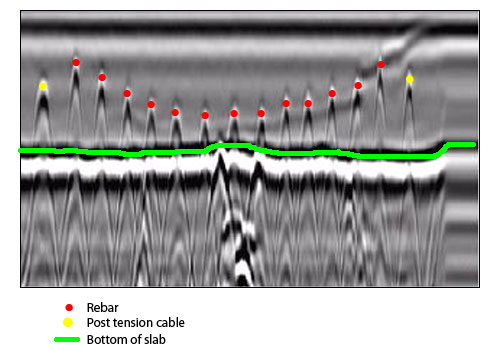Beyond the Surface: Leveraging Advanced Concrete Scanning Techniques for Unmatched Precision and Insight
In the realm of construction and infrastructure upkeep, the pursuit for precision and thoroughness is unending. Advanced concrete scanning strategies have actually become vital tools in this search, using a look underneath the surface area to unveil a globe of critical insights. By harnessing advanced technologies, specialists can discover anomalies, assess the problem of concrete structures, and make informed choices that shape the training course of jobs. The implications of these techniques extend much beyond mere surface-level evaluations, assuring a depth of precision and understanding that is unequaled.
Significance of Advanced Concrete Scanning
The relevance of making use of innovative concrete scanning techniques hinges on the unparalleled precision they provide for finding sub-surface abnormalities and ensuring structural stability. By utilizing cutting-edge modern technologies such as ground-penetrating radar (GPR), electromagnetic induction, and advanced sonar imaging, building and construction professionals can delve below the surface of concrete structures with a level of accuracy that far exceeds standard assessment approaches. Concrete Scanning. These methods allow the identification of covert risks like rebar corrosion, voids, conduits, or post-tension cables that can endanger the stability and safety and security of a framework in time
Furthermore, progressed concrete scanning gives invaluable understandings right into the general condition of a concrete component without the demand for invasive procedures, lessening the danger of causing damages during the assessment procedure. The capacity to determine the precise location and deepness of prospective issues permits targeted repair services and maintenance, eventually prolonging the lifespan of the framework and optimizing its efficiency. Fundamentally, the value of sophisticated concrete scanning can not be overemphasized in the realm of construction and framework maintenance, where accuracy and reliability are extremely important.
Sorts Of Cutting-Edge Technologies

Anomalies and Flaw Detection

In addition to GPR, concrete scanning methods like thermography and impact-echo screening are also efficient in discovering problems and anomalies. Thermography uses infrared innovation to determine variations in surface temperature, indicating potential areas of concern such as delamination or moisture ingress. On the other hand, impact-echo testing includes examining acoustic actions to find voids, cracks, and other problems within the concrete. By leveraging these sophisticated strategies, specialists can proactively attend to structural concerns, ensuring the longevity and safety and security of concrete frameworks.
Assessing Concrete Problem
Exactly how can engineers accurately review the problem of concrete structures to guarantee their durability and safety? Assessing the concrete problem is a critical element of maintaining framework honesty. Different innovative concrete scanning methods are employed for this objective. Ground-penetrating radar (GPR) is typically used to analyze the inner framework of concrete, discovering spaces, fractures, and other abnormalities that may compromise its stamina. Furthermore, impact-echo testing can offer insights right into the thickness and stability of concrete components. Ultrasonic pulse rate testing is another beneficial approach for examining concrete high click here to find out more quality by determining the speed of audio waves through the product.
Combining non-destructive testing approaches with aesthetic examinations enables for a detailed examination of concrete condition, enabling designers to recognize prospective problems early on and execute timely upkeep or fixings. By leveraging these innovative strategies, engineers can guarantee the long-term durability and safety and security of concrete frameworks.
Enhancing Decision-Making Processes
In the realm More hints of framework monitoring, enhancing decision-making processes is necessary for making sure the efficient upkeep and long life of concrete structures. Enhanced decision-making procedures in concrete monitoring entail utilizing advanced scanning strategies to gather detailed information on the condition of structures. By leveraging technologies such as ground-penetrating radar and 3D imaging, stakeholders can make enlightened decisions regarding repair work, substitute, or reinforcement methods.
These progressed scanning methods give vital insights into the inner composition of concrete, determining possible issues such as spaces, splits, or corrosion that may not show up externally. This degree of thorough details permits aggressive upkeep planning, lessening the threat of structural failings and boosting the total lifespan of concrete structures.
Moreover, by integrating digital paperwork and analysis tools into the decision-making process, stakeholders can track the development of concrete conditions with time, enabling anticipating upkeep approaches and maximizing source appropriation. Eventually, the integration of advanced concrete scanning techniques boosts decision-making procedures by supplying unequaled precision, insight, and efficiency in framework monitoring.
Final Thought
In final thought, advanced concrete scanning techniques offer unrivaled accuracy and understanding in identifying anomalies, problems, and assessing the problem of concrete frameworks. By leveraging sophisticated innovations, decision-making processes can be boosted, causing more reliable and enlightened options for maintaining and fixing concrete facilities. These techniques play an essential duty in making sure the security and longevity of concrete frameworks, making them a crucial device in the field of building and engineering.
Furthermore, advanced concrete scanning supplies important understandings into the total condition of a concrete component without the need for intrusive procedures, reducing the threat of triggering damage during the analysis process - Concrete Scanning. One more innovative modern technology is 3D X-ray scanning, which offers thorough pictures of the inner structure of concrete, using valuable info without the need for damaging screening. In Addition, Concrete Cover Meters are used to gauge the density of concrete cover over support bars accurately. Improved decision-making procedures in concrete management include using innovative scanning techniques to gather in-depth information on the condition of structures.In final thought, progressed concrete scanning strategies supply exceptional accuracy and insight in detecting abnormalities, flaws, and analyzing the condition of concrete frameworks